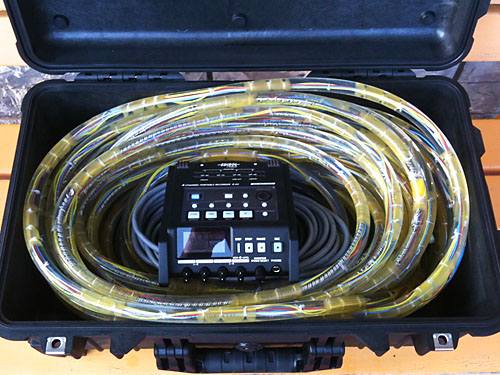I just received the following photo from my friend Dr John Potter:

More interesting than the photo is John's "explanation" of what this is:
"The picture is of a 30m long oil-filled tube containing an array of 4 state-of-the-art hydrophones with preamplifiers, spaced 2m apart (hence the aperture of the active part is 6m). The oil-filled tube allows the array to be neutrally buoyant and either towed or hung vertically in the water with the minimum pickup of flow noise. There is also a portable 96 kSa/s 4-channel recorder in the centre of the image that will record sounds up to 48 kHz from the array onto an SD card. Since the oil-filled tube is 30m long, we can deploy the 4 hydrophones at the depth of our choice up to about 20m below the surface. This will allow us to record humpback sound at close range, without disturbing the whales, with the highest quality and with the possibility to measure their range and source levels. Think of the 4 hydrophones as being able to record a kind of surround-sound, hyper-stereo, THX acoustic landscape."
After reading this a couple of times, I think it means: "It's a kick-a** hydrophone that we can send down to 20 metres and record really cool whale sounds." though I'm not entirely certain.
Anyway, we'll be using this high-tech gadget on the trips that John and I are running together in Tonga soon, with the objective of kicking off what we hope will be a long-running project to understand more about acoustic communication among humpback whales. (More explanation about our trip/ project here.)
There are still a couple of spots left on the first trip from 29 July to 4 August. Drop me a line if you're interested in helping me decipher John-speak for a few days.